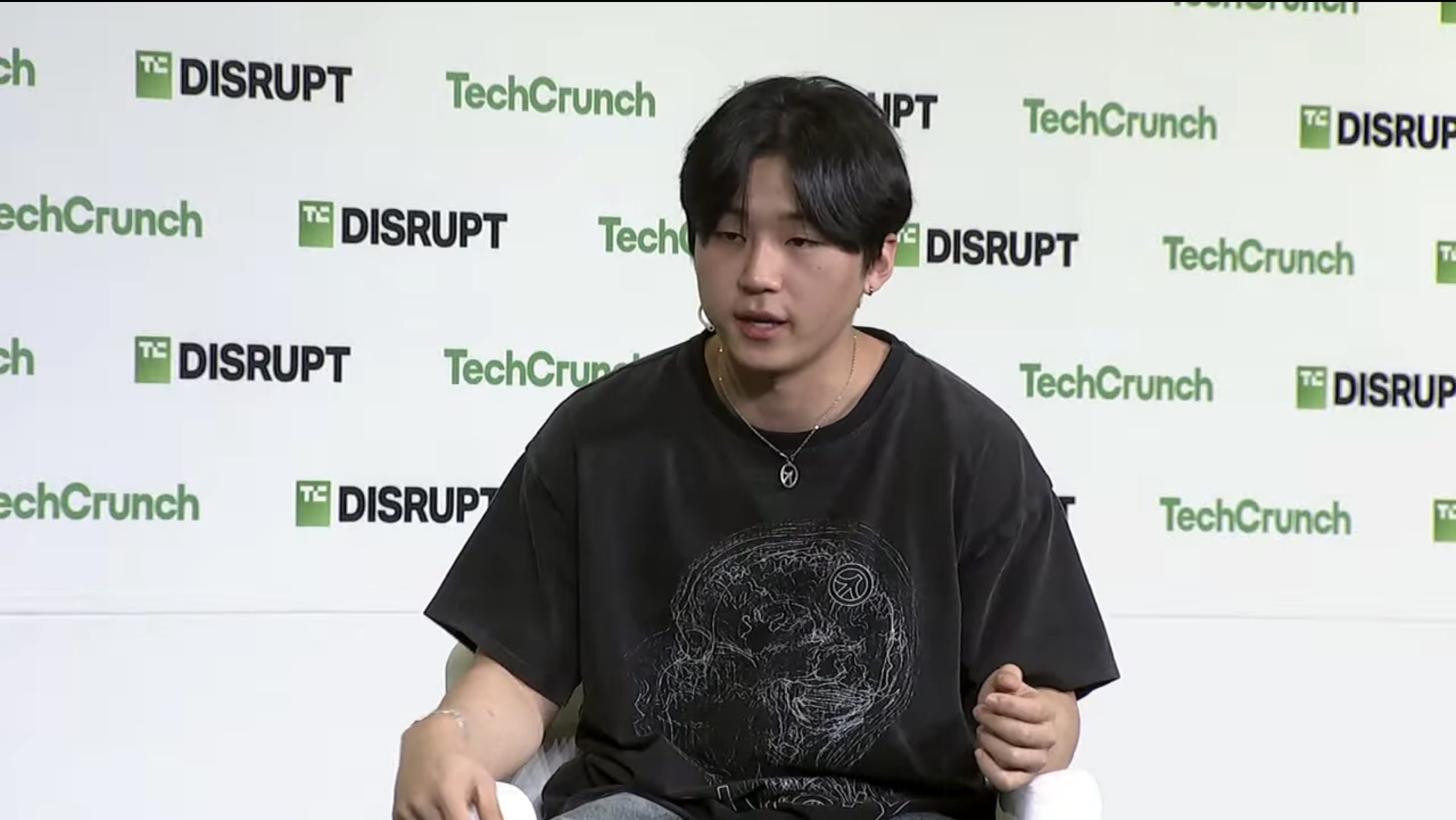
Roy Lee, the visionary behind Cluely, a burgeoning artificial intelligence assistant, recently ignited discussions within the startup ecosystem with his provocative assertions on achieving viral traction. Addressing an audience at Disrupt 2025, Lee presented a compelling, albeit controversial, philosophy for emerging companies: in an increasingly crowded digital landscape, deliberate distribution, often fueled by "ragebait" tactics, is paramount for survival and scalability, especially for ventures outside the specialized realm of deep technology. His unconventional approach challenges traditional notions of brand building, suggesting that capturing public attention, even through contentious means, now outweighs conventional reputational concerns in the relentless pursuit of market visibility.
The Viral Imperative in a Crowded Market
The contemporary startup environment is characterized by an unprecedented level of competition. Thousands of new ventures emerge annually, each vying for investor capital, media attention, and, crucially, user adoption. For companies operating in sectors beyond "deep tech"—those focused on foundational scientific discovery or engineering innovation that inherently garners attention due to its novelty and complexity—the challenge of differentiation is particularly acute. Lee’s argument underscores a pragmatic reality: a groundbreaking product, if unknown, is effectively non-existent.
Historically, marketing strategies evolved from traditional advertising channels like print, radio, and television to the early days of digital marketing with search engine optimization and banner ads. The advent of social media, however, profoundly reshaped this landscape, transforming it into a dynamic arena where content can disseminate globally in moments. This shift introduced the concept of virality, where user-generated or platform-promoted content achieves widespread recognition through rapid sharing. For many startups, this organic reach represents a cost-effective alternative to expensive advertising campaigns, making the pursuit of viral content a central, often elusive, objective. Lee contends that for the vast majority of startups lacking an inherently "viral" product or a massive marketing budget, intentionally provocative content—often labeled "ragebait"—becomes a potent, albeit risky, mechanism to cut through the noise. He specifically notes that individuals highly skilled in engineering might not possess the inherent aptitude for crafting such engaging, often humorous or polarizing, content, suggesting a dichotomy between technical prowess and the demands of modern content creation.
Cluely’s Rise: A Case Study in Calculated Provocation
Cluely’s trajectory serves as a prime example of Lee’s philosophy in action. The company’s AI assistant first garnered widespread attention in April 2025 through a bold, even audacious, claim: its "undetectable windows" feature could purportedly "help you cheat on anything." This assertion, disseminated across digital platforms, immediately sparked a firestorm of debate. Educational institutions, students, and technology commentators weighed in, generating immense discussion and media coverage.
However, the viral claim was swiftly disproven. Within weeks, a consortium of proctoring services and educational technology firms publicly demonstrated their ability to detect the use of Cluely’s AI assistant, effectively nullifying the product’s central, provocative selling point. In a traditional business paradigm, such a public debunking might have spelled disaster, eroding trust and potentially leading to a rapid decline in interest. Yet, Cluely experienced a counterintuitive outcome. Just two months later, in June 2025, the startup successfully closed a $15 million funding round led by Andreessen Horowitz, a prominent venture capital firm renowned for its investments in transformative technology companies. This significant capital injection not only validated Cluely’s market presence but also propelled it into a highly visible position within the increasingly crowded artificial intelligence assistant sector. The incident highlights a critical aspect of Lee’s strategy: the initial claim, whether factually accurate or not, successfully generated the one commodity he values most—attention. The subsequent disproving of the claim did not erase the initial surge in awareness; instead, it arguably extended the news cycle, keeping Cluely in the public consciousness longer.
The Fading Echo of Reputation in the Attention Economy
Lee articulates a worldview where "reputation is sort of a thing of the past." This provocative stance reflects a fundamental shift in how public figures and brands engage with their audiences in the digital age. He contrasts the traditional media’s meticulous guarding of its "ironclad reputation," exemplified by institutions like The New York Times, with the unfiltered, often chaotic, communication styles of contemporary tech titans. Citing examples like Sam Altman’s casual online commentary or Elon Musk’s frequently "batshit crazy" social media activity, Lee posits that a new paradigm has emerged.
This "attention economy," as many analysts term it, prioritizes engagement and visibility above almost all else. In this ecosystem, the metrics of success are often measured in clicks, shares, likes, and comments, regardless of the sentiment behind them. Negative attention, in this framework, is still attention, and can be leveraged for brand awareness. The history of media shows a gradual acceleration of news cycles, but social media has amplified this to an extreme degree, where narratives shift hourly. In this rapid-fire environment, a scandal or controversy, while potentially damaging in the long term, can provide an immediate, massive surge in visibility. Lee’s philosophy suggests that for a startup struggling for oxygen, this immediate burst of attention can be the difference between obscurity and attracting the vital venture capital needed for growth. He argues that the world is "trending to a different place," demanding communication that is "extreme, authentic and personal"—qualities often found in controversial content.
Crafting Controversy: A Strategic Choice
Lee’s personal involvement in shaping Cluely’s public narrative is central to his strategy. He openly acknowledges his talent for "framing myself in a way that’s controversial," believing his unique "voice is naturally just very enraging to a lot of people." This self-awareness points to a deliberate cultivation of a polarizing persona, a strategic choice to stand out in a homogenous landscape. The effectiveness of "ragebait" lies in its ability to trigger strong emotional responses—anger, indignation, amusement, or even bewilderment—which are powerful drivers of online sharing and discussion.
While Lee’s approach appears effective for Cluely, it raises questions about the replicability and sustainability of such tactics. Is the ability to craft controversy an inherent trait, as Lee implies when he suggests engineers might lack it, or a learned skill? Psychological studies on virality often point to content that evokes high-arousal emotions (both positive and negative) as being more likely to spread. Lee seems to have tapped into this mechanism, intentionally pushing boundaries to elicit a strong reaction. This strategy, however, requires a delicate balance; crossing the line into genuine harm or widespread offense can quickly backfire, leading to boycotts, platform censorship, or irreparable brand damage.
Ethical Crossroads and Societal Implications
The "help you cheat on anything" claim by Cluely, despite being disproven, brings to the forefront significant ethical considerations. The education sector, already grappling with the implications of AI on academic integrity, faced an immediate challenge from Cluely’s marketing. While the product was quickly shown to be detectable, the very premise of promoting a tool for cheating sparked widespread concern among educators, parents, and policymakers. This incident underscores the broader societal impact of marketing strategies that prioritize virality over ethical responsibility.
The use of "ragebait" can contribute to a more polarized and less civil online discourse. When controversy is rewarded with attention and capital, it incentivizes increasingly extreme claims, potentially blurring the lines between legitimate debate, hyperbole, and outright misinformation. The long-term effects of normalizing such tactics on public trust in information, institutions, and even commercial entities remain a subject of ongoing debate and concern. As technology continues to advance, the responsibility of companies to consider the broader societal implications of their marketing and product claims becomes increasingly critical.
The Venture Capital Perspective: Funding the Furore
Andreessen Horowitz’s $15 million investment in Cluely, following its controversial and disproven claim, provides a fascinating case study in venture capital decision-making. VC firms typically seek high-growth potential, disruptive innovation, and strong market fit. While traditional metrics like robust user growth and proven revenue streams are usually paramount, Cluely’s situation suggests that extreme visibility and the ability to capture attention can, in some cases, serve as a proxy for early market validation.
For a firm like a16z, the investment likely represents a bet on Lee’s demonstrated ability to generate buzz and potentially build a substantial user base, regardless of the initial controversy. It reflects a willingness to fund unconventional growth strategies, perhaps seeing the "ragebait" as a highly effective, albeit unorthodox, form of customer acquisition. This move by a prominent VC firm sends a signal to the startup ecosystem: in the attention economy, even negative publicity, if it leads to significant awareness and user acquisition, might be deemed a worthwhile trade-off for rapid growth and market penetration. However, it also raises questions about the metrics VCs prioritize and the potential long-term risks associated with backing companies whose initial traction is built on contentious or even misleading claims.
Beyond the Buzz: Measuring Unconventional Success
Despite the significant funding round and high visibility, Lee remained tight-lipped when asked about Cluely’s revenue or user numbers. His rationale—that sharing positive numbers garners little attention while negative numbers attract criticism—further illustrates his strategic approach to public perception. He stated, "I’ll say we’re doing better than I expected, but it’s not the fastest growing company of all time." This ambiguity makes it challenging for external observers to definitively assess the long-term efficacy and sustainability of Cluely’s marketing strategy.
While immediate attention and venture capital are crucial for early-stage startups, sustained growth typically requires a solid foundation of user satisfaction, product utility, and, eventually, revenue. Without these traditional metrics, the true success of a "ragebait" strategy remains difficult to quantify. The question lingers: can a company built on a foundation of controversy transition into a stable, reputable, and profitable enterprise? Or is this a strategy best suited for rapid, initial bursts of growth, demanding a pivot to more conventional marketing once a critical mass of attention is achieved? The future trajectory of Cluely, and similar ventures employing unconventional marketing tactics, will offer valuable insights into the evolving dynamics of startup success in the digital age.
In conclusion, Roy Lee’s approach with Cluely offers a stark reflection of the contemporary digital landscape, where attention has become the ultimate currency. While his "ragebait" strategy has undeniably generated significant visibility and attracted substantial investment, it also sparks critical conversations about ethical boundaries, the nature of online discourse, and the evolving metrics of success in the startup world. As the attention economy continues to mature, the debate over whether controversy is a sustainable foundation for long-term growth will undoubtedly persist.





